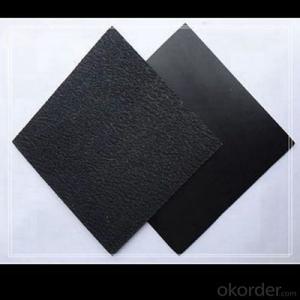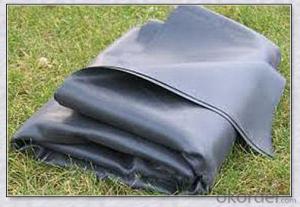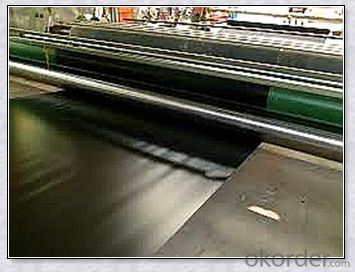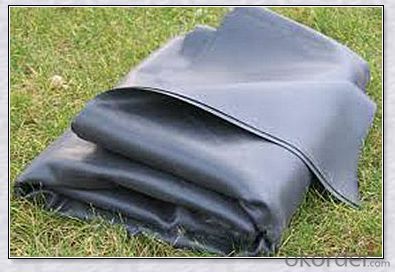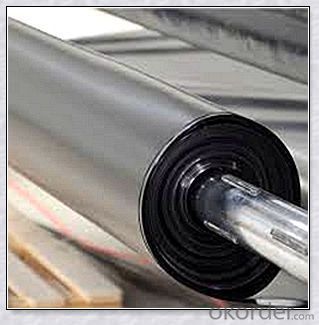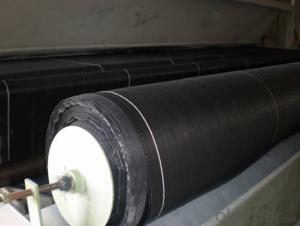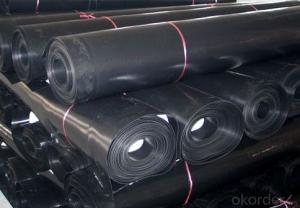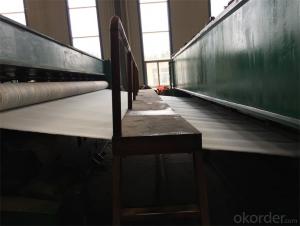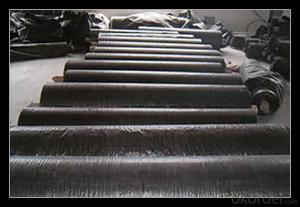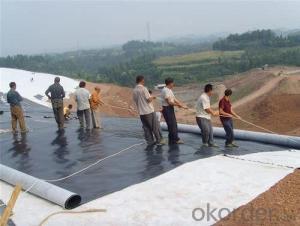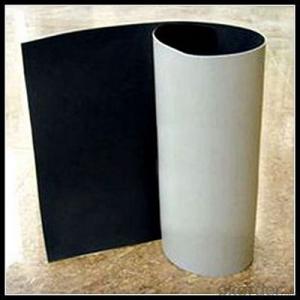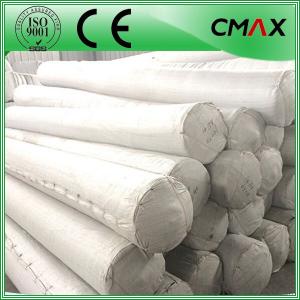Non Woven Geotextile Price for Building Material Smooth Geomembrane Roll
- Loading Port:
- China main port
- Payment Terms:
- TT OR LC
- Min Order Qty:
- 1000 m²
- Supply Capability:
- 1000000 m²/month
OKorder Service Pledge
OKorder Financial Service
You Might Also Like
Specification
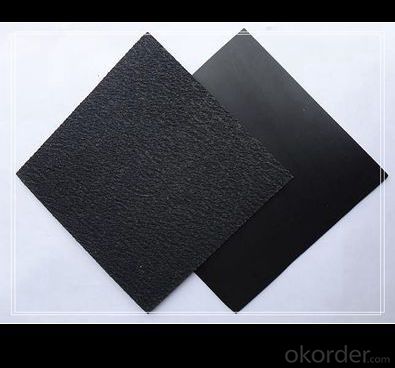
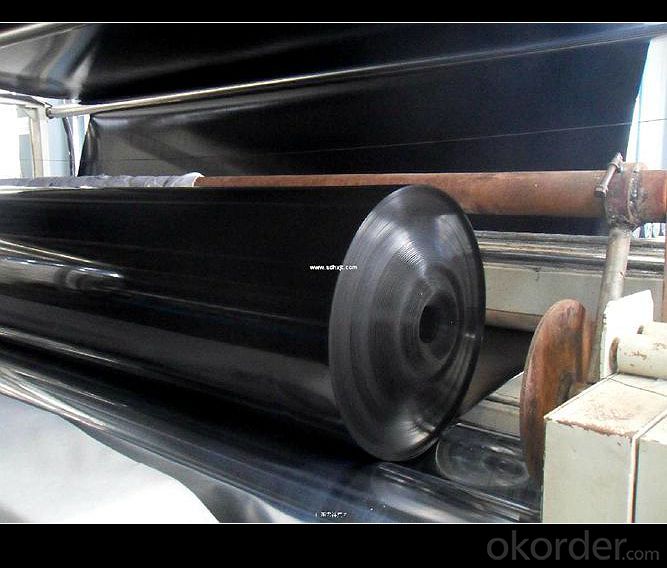
Type:
Geomembranes, HDPE Geomembrane
Place of Origin:
China (Mainland)
Brand Name:
CMAX
Model Number:
GM ISO
Material:
HDPE, HDPE
Density:
0.94kg/m3
Thickness::
1mm-3mm
Width::
4-9m
Color:
Black/ Blue/Green and Other
Standard:
ASTM/ GM13/GH-1/GH-2
Surface:
Smooth/ Textured
Usage:
It is the first choice material of drainage,filtration reinforcement and protection
Packaging & Shipping
Packing: PLASTIC FILM INSIDE, AND WOVEN BAG OUTSIDE
Shipping: About 15 days after receipt the deposit
Our Service
Quality assurance
1.On a regular basis or as per your request,we entrust national testing agencies to conduct quality inspections
2. Strictly in accordance with the ISO9001-2008 international quality system standard,we monitor and manage the whole process throughout production,quality testing,and measurement to ensure product quality
3. For quality-related construction delay or substandard construction(except for damage or losses due to customer’s responsibility or irresistible natural disasters),we have refunding,replacement,and repair services.We will respond to customers’ feedbacks on quality issues within 24 hours.
Q: What kind of payments does jenor support?
A: T/T, L/C, Cash are accepted.
Q: Do you charge for the samples?
A: Accordeing to our company policy, the samples are free, we only charge the freight fee. And we will return the freight fee during the next order.
Q: Can you produce according to customers' design?
A: Sure, we are professional manufacturer, OEM and ODM are both welcome.
Q: Do you have other products?
A: Yes, please check the pictures:
geotextile fabric
permeability,filtration,easy for construction
ISO and CE certificate
Good quality and competitive price
- Q: Production of 1 square meter 100g geotextile consumption of polyester fiber how many kilograms
- Of course, or 100 grams of Kazakhstan, the loss can be ignored manufacturers do not produce geotextile geomembrane
- Q: Do you have a drainage board and a geotextile on the basement roof?
- Hello, generally do not require re-test Huazhi geotextile materials, manufacturers need to answer for your needs
- Q: Can geotextiles be used in underground gas storage projects?
- Yes, geotextiles can be used in underground gas storage projects. Geotextiles are commonly used in these projects to provide separation, filtration, and drainage functions. They help to prevent soil erosion, control water flow, and provide stability to the project. Additionally, geotextiles can enhance the gas storage system's efficiency by improving the overall performance and integrity of the underground structure.
- Q: What are the environmental impacts of geotextile production?
- The environmental impacts of geotextile production include energy consumption during manufacturing, emissions of greenhouse gases, water and air pollution from chemical processes, and the generation of solid waste. However, compared to traditional construction materials, geotextiles have lower environmental impacts in terms of resource consumption, carbon emissions, and waste generation.
- Q: How do geotextiles contribute to green building certifications?
- Geotextiles contribute to green building certifications by promoting sustainable construction practices. These specialized fabrics are used to enhance soil stability, control erosion, and manage stormwater runoff, resulting in improved site conditions and reduced environmental impacts. By incorporating geotextiles, construction projects can meet various criteria for green building certifications, such as water efficiency, site development, and erosion control, ultimately contributing to more sustainable and environmentally-friendly structures.
- Q: Geotextile now how much money? what is the price?
- Is to be based on market conditions, raw material prices, processing technology to determine the price of geotextile to Hongxiang Li Qian short wire geotextile, for example, t price is generally between 4900-7500 yuan / ton, but the weight of <200g , An increase of 100 yuan / ton; weight> 800g, an increase of 500 yuan / ton. 187 & lt; 6600 & lt; 5604
- Q: Can geotextiles be used in dam construction?
- Yes, geotextiles can be used in dam construction. Geotextiles are commonly used in dams as they provide reinforcement, filtration, and drainage functions. They help in stabilizing the soil, preventing erosion, and improving the overall strength and performance of the dam structure.
- Q: Are geotextiles resistant to hydrostatic pressure?
- Yes, geotextiles are generally resistant to hydrostatic pressure. They are designed to allow water to pass through while providing a barrier against soil erosion and maintaining stability in various applications such as drainage systems, retaining walls, and road construction.
- Q: Waterproof geotextile market demand prospects?
- Supply geotextile, geomembrane, composite geomembrane and other geotechnical materials. Market prospects are excellent. Geotechnical material manufacturers to answer your questions
- Q: Are geotextiles resistant to fungal growth?
- Yes, geotextiles are generally resistant to fungal growth. They are designed to be durable and have low organic content, which makes them less susceptible to fungal colonization. Additionally, geotextiles are often treated with fungicides during manufacturing to provide further protection against fungal growth. However, the resistance may vary depending on the specific type and quality of geotextile used.
Send your message to us
Non Woven Geotextile Price for Building Material Smooth Geomembrane Roll
- Loading Port:
- China main port
- Payment Terms:
- TT OR LC
- Min Order Qty:
- 1000 m²
- Supply Capability:
- 1000000 m²/month
OKorder Service Pledge
OKorder Financial Service
Similar products
Hot products
Hot Searches
Related keywords
